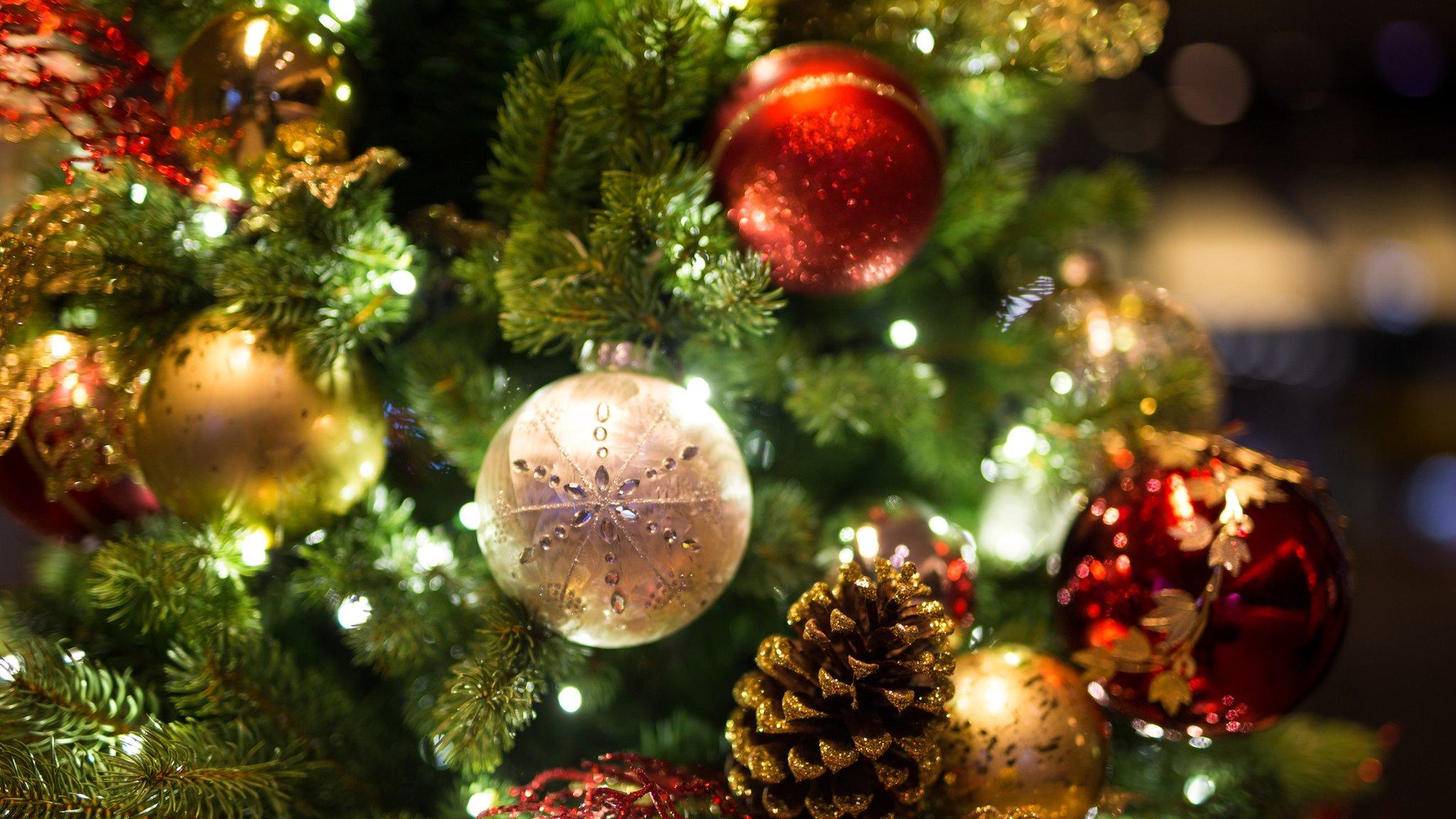Christmas: Ten European traditions you may not know
- Published
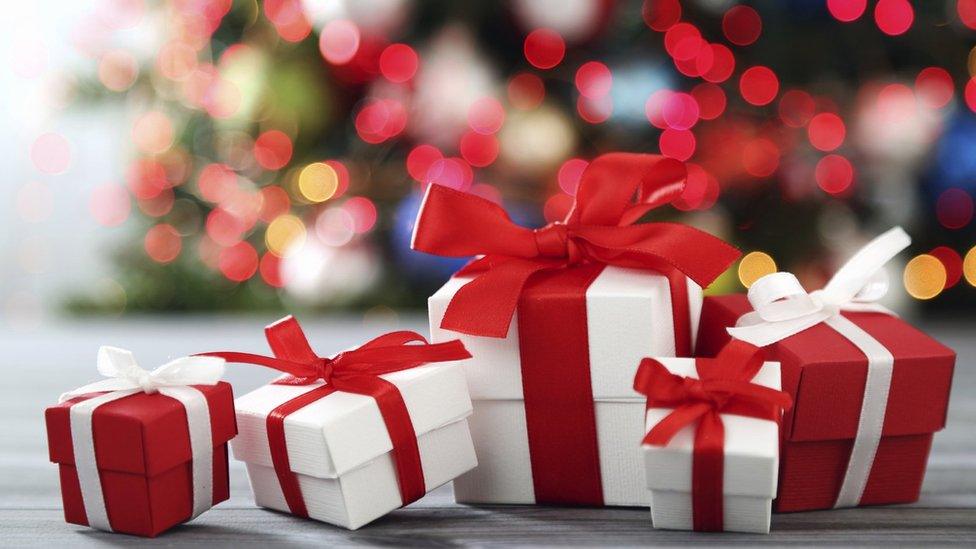
In the UK, many of us enjoy turkey, mince pies and presents on 25 December. But for some children they get presents much sooner.
Christmas is celebrated differently all over the world - you might have some of your own special family traditions that come from other countries too.
So how is Christmas celebrated outside of the UK? We've got ten festive traditions from across Europe for you to learn about!
Netherlands
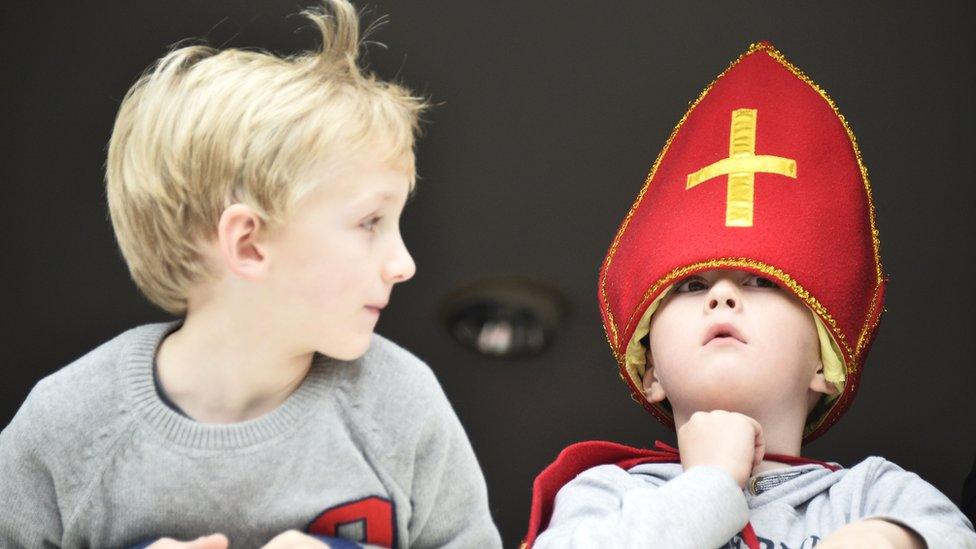
Children in the Netherlands dressed up for the arrival of Sinterklaas
You might know other names for Father Christmas such as Santa Claus or even Jolly Saint Nic?
But did you know that the name comes from European traditions such as the feast of Sinterklaas or St Nicholas Day.
Christmas celebrations start early in the Netherlands, and parts of Belgium, as Sinterklaas - that is St Nicholas - arrives by boat on the last Saturday in November.
He travels across the Netherlands dressed in red bishops robes. He also doesn't ride in a sleigh like Father Christmas does on Christmas Eve in the UK, instead, he travels on a white horse called Amerigo.

When he arrives, children leave out a shoe with a carrot inside for his horse Amerigo.
Children usually get their presents on the evening of 5 December, which is known as Sinterklaas Eve.
Germany
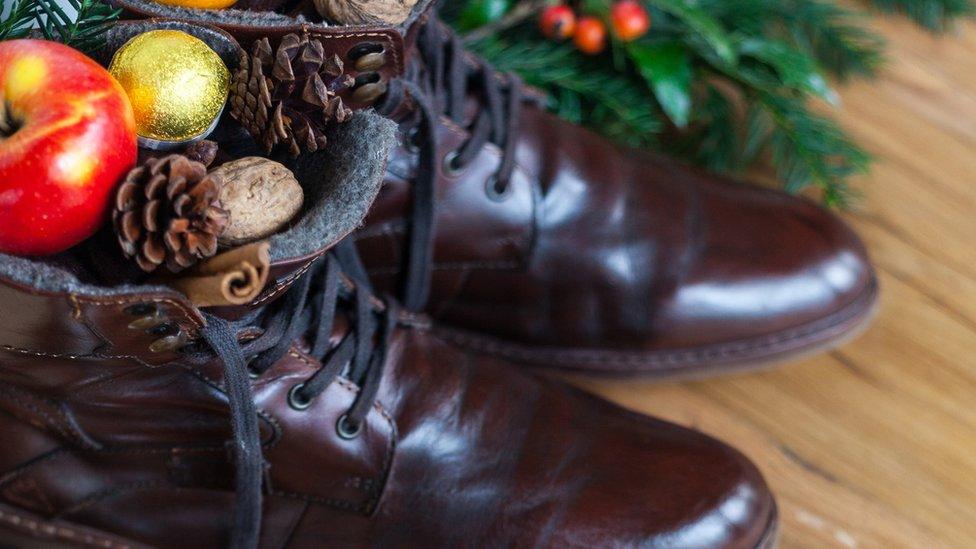
St Nicholas Day celebrations also start in Germany on 6 December.
Children tidy their rooms, clean their toys, and shoes and boots are polished and placed outside by the door.
The next morning, the boots are filled with sweets, nuts, and small gifts if the children have been good.
If they've been naughty, St Nicholas' servant Knecht Ruprecht will leave twigs for them!
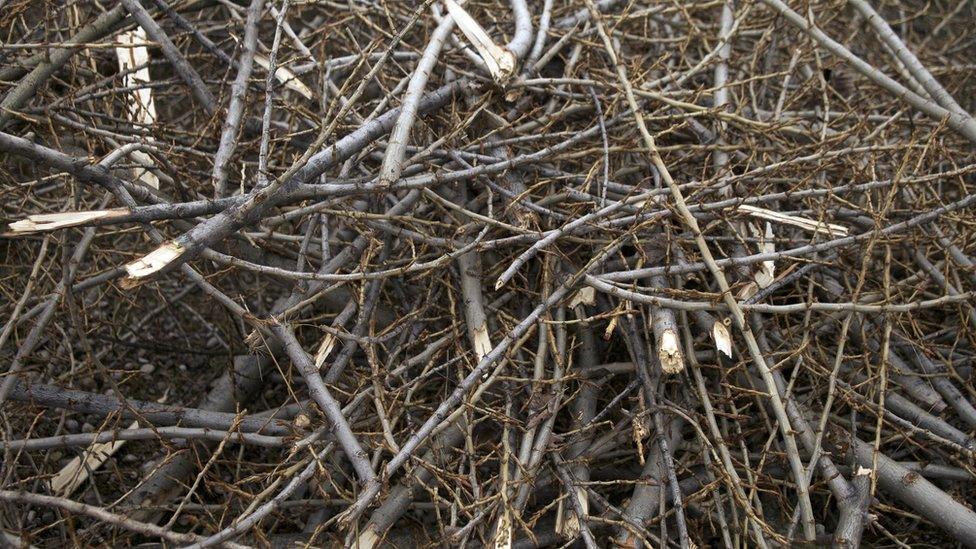
If they've been naughty, German children will find twigs have been left for them!
In Germany a meal is eaten on Christmas Eve, which won't contain any meat and children will also open their main Christmas presents on 24 December.
Meat can be eaten in a feast on Christmas Day.
Poland

Some children in Poland might receive presents on the 6 December for St Nicholas day also known as Sw Mikolaj in the country.
Christmas Eve is also a big deal in Poland where families traditionally gather for a meal known as Wigilia.
They will start eating when they see the first star in the night sky.
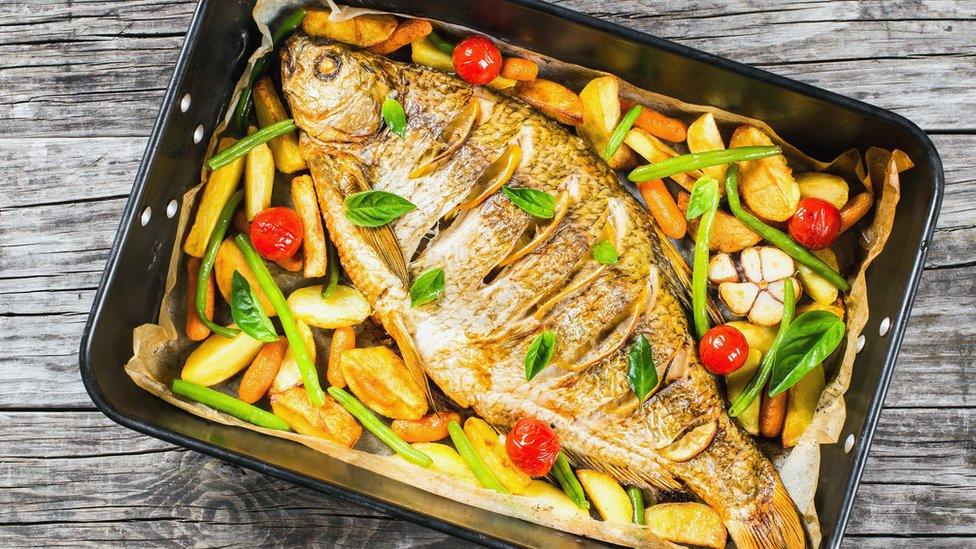
Carp, a kind of fish, is traditionally eaten in Poland on Christmas Eve
The meal has 12 courses, which will traditionally include carp fish.
It will also include the family sharing a special bread wafer called "Oplatek", which symbolises forgiveness and grown-ups give out presents.
Spain

This is Tió de Nadal nad kids fill him up with lots of sweet treats and then beat him with sticks...
Christmas starts on 8 December in Spain with the Feast of the Immaculate Conception.
In Catalonia, on 8 December, there is a special celebration called the beating of the Christmas log.
Every night until the 24th of December, children 'feed' the happy log with dried fruit and nuts. They also cover up the log - called Tió de Nadal - with a blanket so it stays warm.
Then on Christmas Eve the little log is brought out and beaten with sticks by children while they sing a traditional song.
After this the children look under the blanket to find that Tió de Nadal has 'pooped' out lots of treats!
Like in Poland, the main Christmas meal is eaten on Christmas Eve, called la Nochebuena.
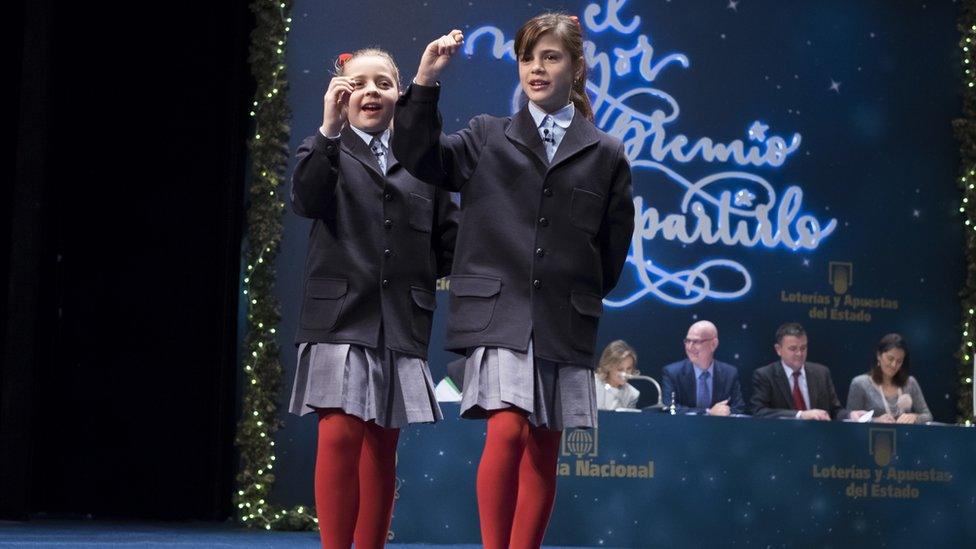
Children read out the numbers in the 2015 Christmas lottery in Spain, called El Gordo
Another tradition happens on 22 December.
There is a big lottery draw called El Gordo, which is covered on the television and on radio, where lots of people win money.
On 28 December, Spain has their equivalent of April Fools' Day, called Holy Innocents' Day, when people play jokes on each other.
Children may be given some presents on Christmas Day, but traditionally they are opened on 6 January.
This is called Epiphany, when the Three Kings are said to have visited the baby Jesus and given him their gifts.
Finland

The Christmas peace period in Finland has been announced from the balcony of the Brinkkala building in Turku since 1886
Again, Christmas Eve is a big celebration in Finland, while Christmas Day is quieter and spent relaxing at home with family.
In a city called Turku, a special ceremony happens, which many people watch on television or listen to on the radio.
At the ceremony, the beginning of the Christmas peace period is announced, which lasts from midday on Christmas Eve for 20 days.
Traditionally, people will eat special rice porridge and have plum fruit juice for breakfast on Christmas Eve. There is a tradition to hide almonds in the porridge and whoever finds them will have a lucky year ahead of them.
They may also visit a sauna to relax during the day, before the big celebrations in the evening.
Father Christmas is known as Joulupukki, which means "Christmas Goat". Because of this, people dress up in goat masks to deliver presents.
Sweden
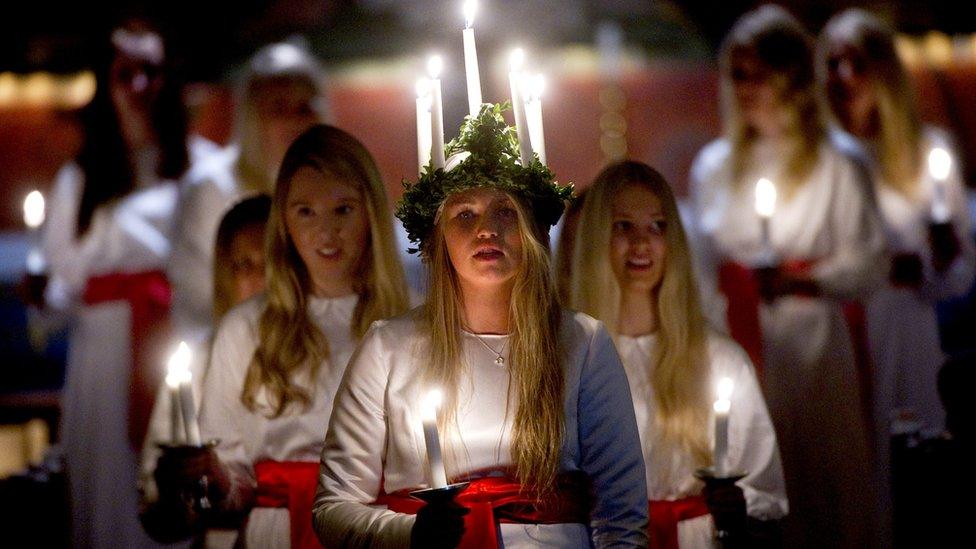
A procession with a girl playing St Lucia at the front, with her crown of candles
In Sweden, there is a special celebration on St Lucia Day, which is 13 December.
It isn't completely clear where the tradition of St Lucia came from, as there's a few stories that could have mixed together.
One story says that St Lucia was young Christian girl who was killed in the 4th Century because of what she believed in.
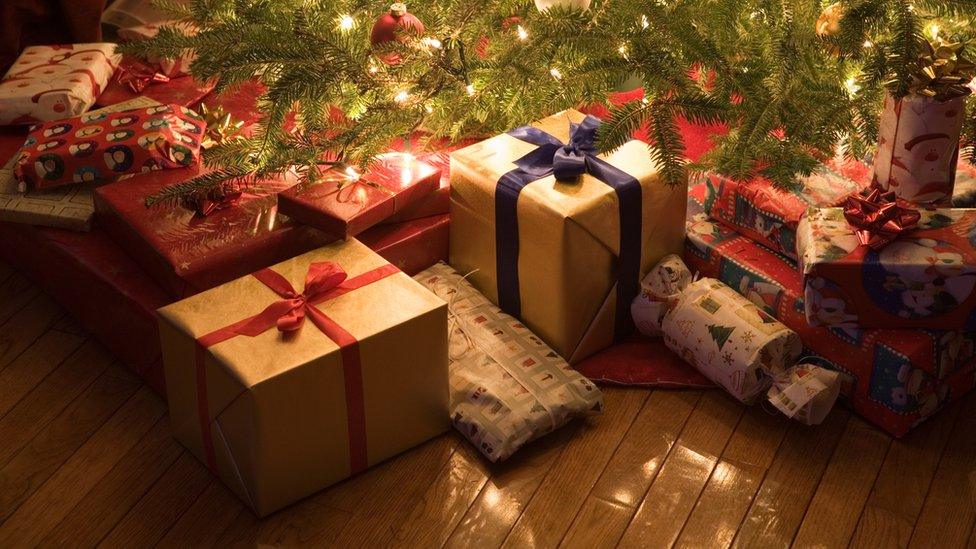
Swedish children will open their presents on 24 December
Swedish people mark this with many Lucia processions, led by a girl in a white dress with a crown of candles.
Children open their presents on Christmas Eve. The night before, they are expected to leave a bowl of porridge out for Tomten - their name for Father Christmas - so that he will leave presents for them.
Swedish people also have their main meal on Christmas Eve. This tends to be a big buffet called Julbord, which people are encouraged to visit several times to eat lots of food!
Norway
Norwegian children look out for two creatures at Christmas.
First is a creature like a goat called Julebukk, who is a present-carrying gnome. Then there is Jul Nisse, who guards farm animals and plays tricks on children if they don't leave porridge out for him.
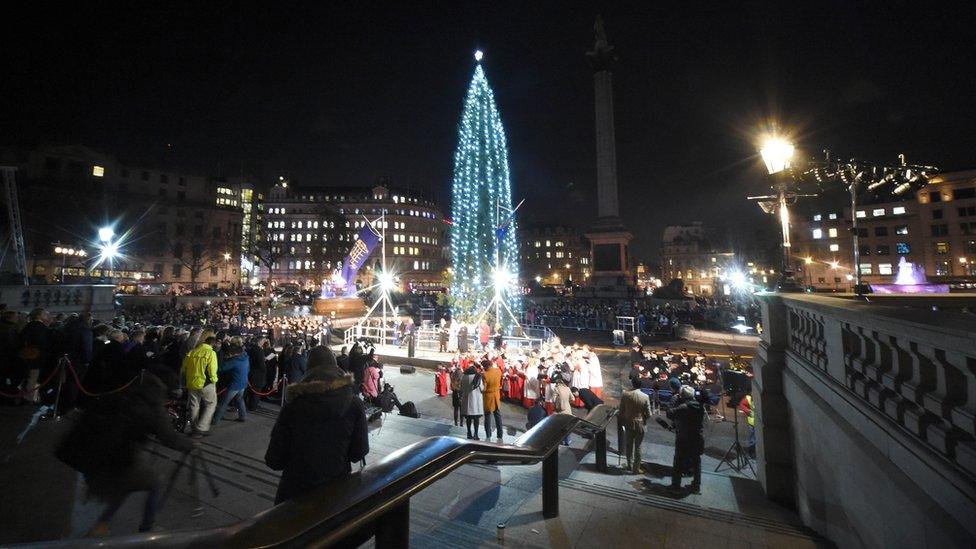
Norway donates a Christmas tree to the UK every single year. Here is 2016's tree in Trafalgar Square in London
They have to do this if they want presents to be left for them, which they open on Christmas Eve after the main meal.
Norway also gives the UK a Christmas tree every year, which stands in Trafalgar Square in London.
This is to say thank you for helping Norway during World War II.

Children in Norway leave out porridge for Jul Nisse, a bit like kids in the UK might leave a mince pie for Father Christmas
Italy
Epiphany (6 January) is marked in Italy when children will receive a stocking of sweets if they've been good or a stocking full of coal if they haven't.
This is brought by the Italian Christmas witch, who is called La Befana.
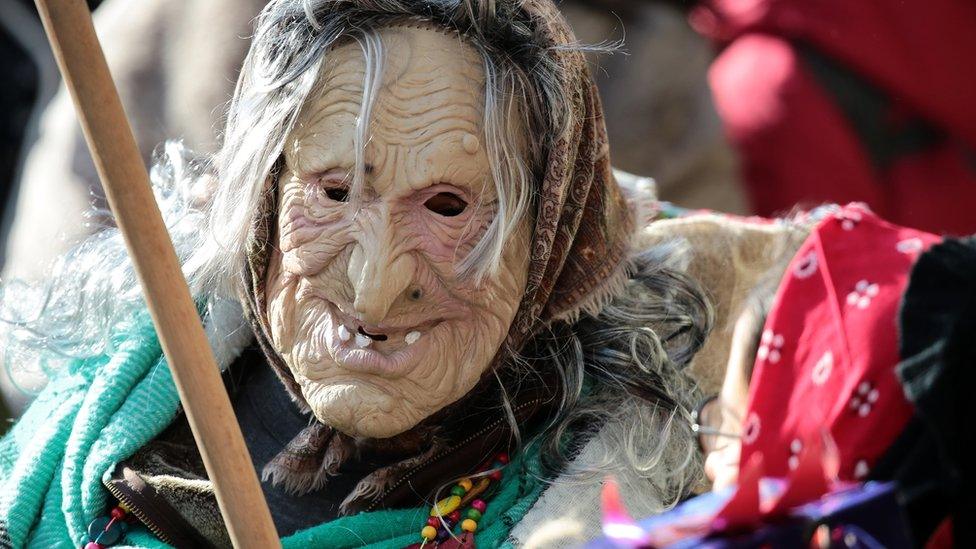
Somebody dressed up as La Befana in Italy
Some say she accompanied the Wise Men on their way to baby Jesus on Epiphany.
She is said to be old, ugly and wears bad clothes, because she is a symbol for the old year which has ended.
A bit like people in the UK might leave a carrot for Rudolph and a mince pie for Father Christmas on Christmas Eve, some families will leave a glass of wine and some food for La Befana.

Italians might leave a drink and some food out for La Befana when she visits, just like in the UK we might leave some food and drink for Father Christmas and his reindeer
Like with many families in the UK, lunch on Christmas Day is the most important meal.
Iceland
Children in Iceland have to wait until the Christmas Eve meal is finished before they are allowed to open their presents.
Traditionally, the main dish of the meal is called Hangikjot, which is a leg of roast lamb.
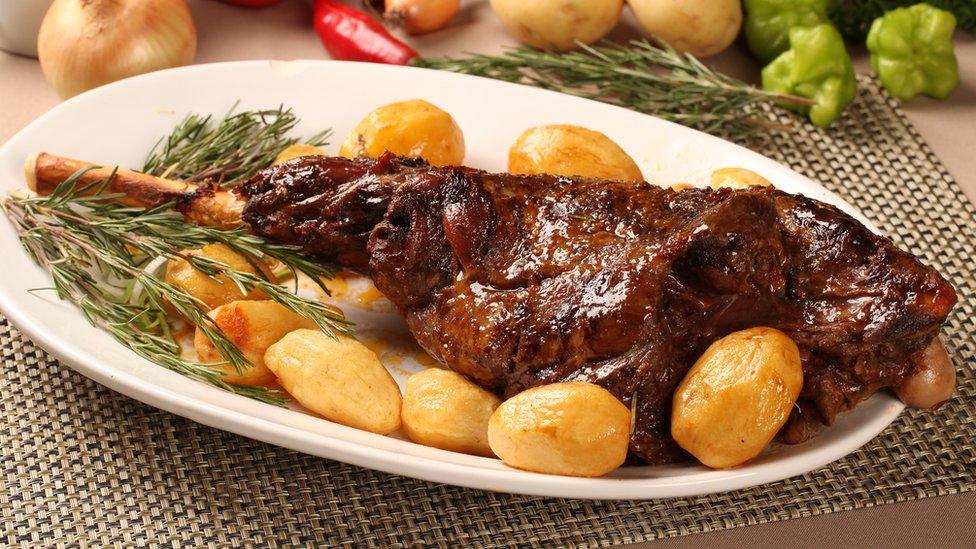
People in Iceland might enjoy a delicious leg of lamb for their Christmas meal
They actually have 13 Father Christmases, called Yule Lads!
These mischievous characters are said to live in the mountains and visit towns one by one in the 13 days leading up to Christmas.
Children leave shoes out for the Yule lads, who will leave presents in them if they've been good, or rotten potatoes if they've been bad.
There is a tradition that says everyone must receive a new piece of clothing for Christmas.
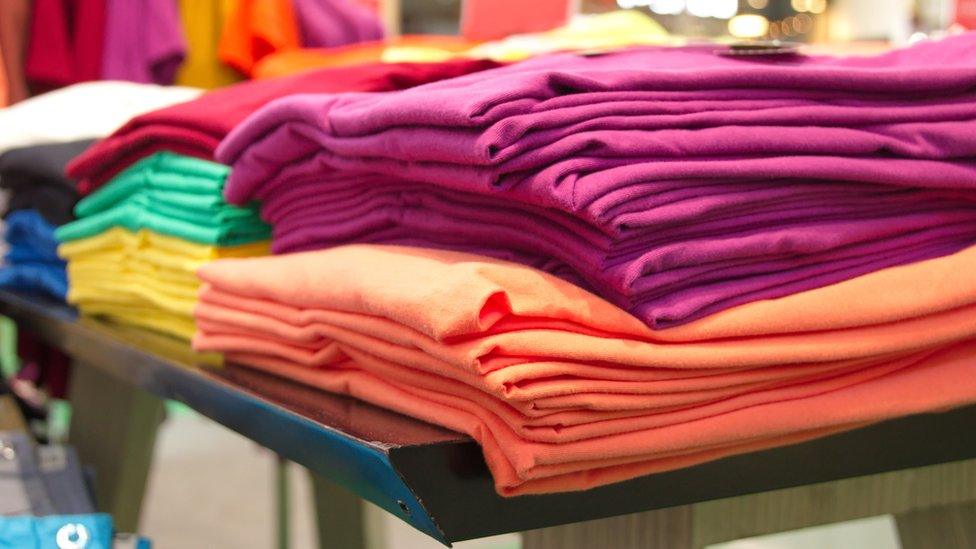
Expect some new clothes for Christmas if you live in Iceland!
If they don't, they might be eaten by a giant Christmas cat who belongs to the Yule lads' mum called Grýla!
Greece
In many places in Greece, Easter is celebrated more than Christmas.
However, Christmas is still important. Children go from house to house on Christmas Eve, playing music and singing carols in return for treats to eat.
Before Christmas, fresh basil is wrapped around a wooden cross, which is used to sprinkle water around the house to keep away mischievous goblins called Killantzaroi.

In Greece, people wrap fresh basil around a wooden cross
Some people might also keep a fire lit which they think will stop the goblins causing chaos!
Presents are usually given on 1 January.
- Published23 December 2022
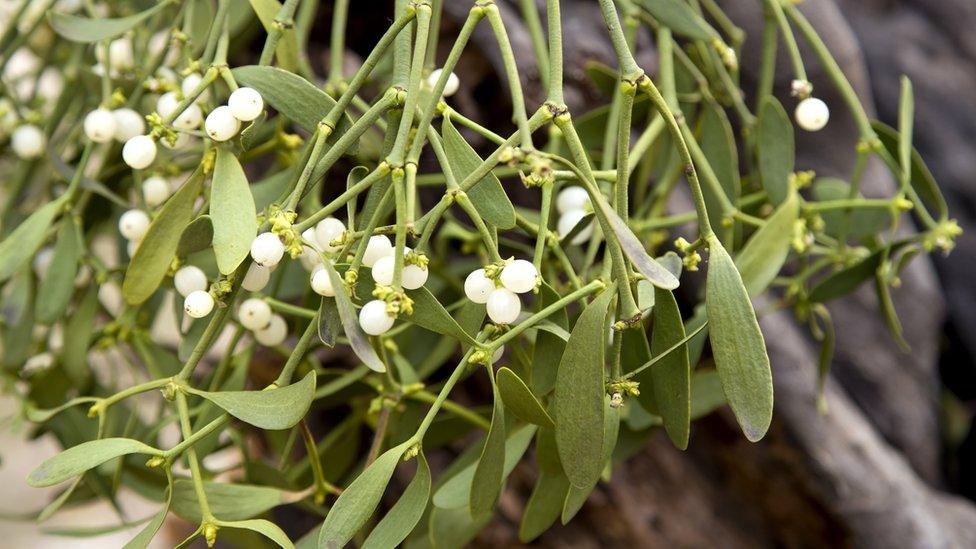
- Published27 December 2022

- Published20 December 2022
